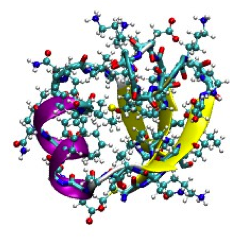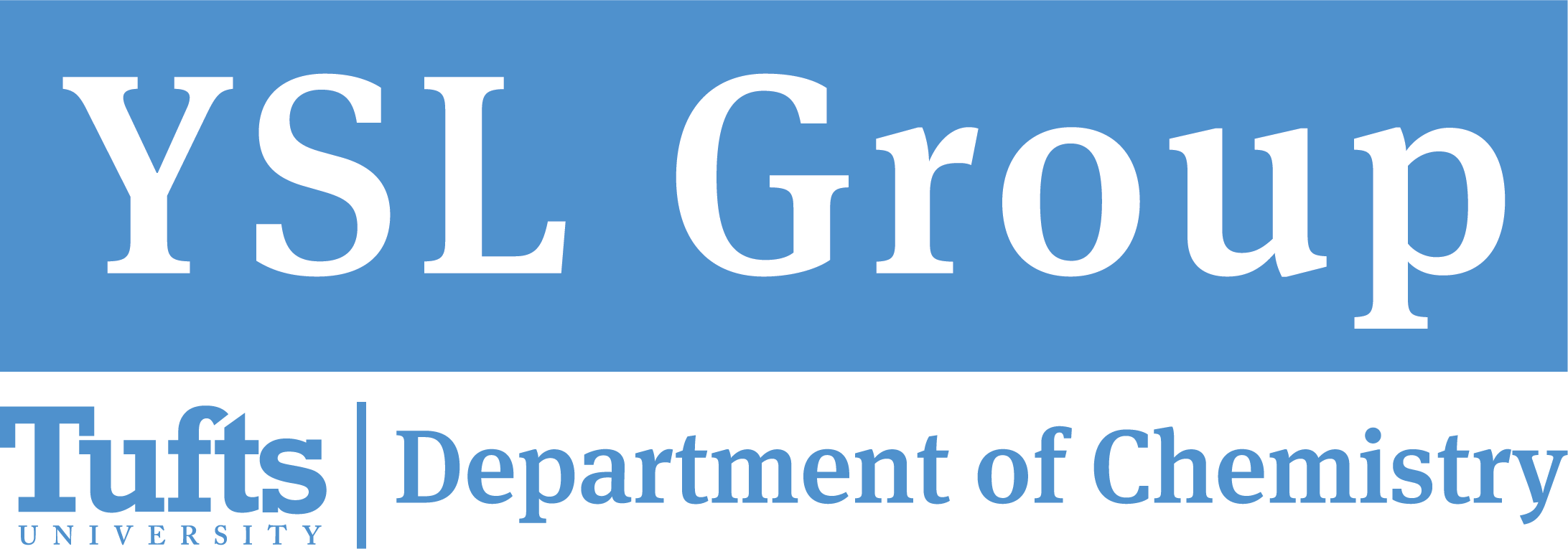Protein Folding
Our team works to understand the effects of mutations, post-translational modifications, and non-natural amino acids on protein folding.
Understanding protein folding has long been a research focus for chemists. Molecular dynamics simulations can provide atomistic-level information on protein structure and dynamics.

In vivo, most proteins go through co-/post-translational modifications. One of the most common modifications is glycosylation. Glycans have crucial and diverse biological functions, modulating a wide variety of interactions. Besides these extrinsic effects, glycans can affect the intrinsic structure and stability of the glycoproteins. Glycosylation is often thought to induce or stabilize a beta-turn configuration on the attached proteins and we are working with a number of model peptides to characterize the origin and the strength of this induction and stabilization. From a protein engineering perspective, we are also very interested in the effects of non-natural amino acids on protein structure and folding.
Furthermore, we use computational tools to help understand how the host chaperones and proteostasis network influence viral evolution and their ability to escape selection pressure.
Related YSL Group Papers
J. Yoon, Y. M. Zhang, C. Her, R. A. Grant, A. M. Ponomarenko, B. E. Ackermann, T. Hui, Y.-S. Lin, G. T. Debelouchina, M. D. Shoulders, “The immune-evasive Proline 283 substitution in influenza nucleoprotein increases aggregation propensity without altering the native structure,” Sci. Adv. 10, eadl6144 (2024).
J. Yoon, E. E. Nekongo, J. E. Patrick, T. Hui, A. M. Phillips, A. I. Ponomarenko, S. J. Hendel, R. M. Sebastian, Y. M. Zhang, V. L. Butty, C. B. Ogbunugafor, Y.-S. Lin, M. D. Shoulders, “The endoplasmic reticulum proteostasis network profoundly shapes the protein sequence space accessible to HIV envelope,” PLOS Biol. 20, e3001569 (2022).
A. M. Phillips, A. I. Ponomarenko, K. Chen, O. Ashenberg, J. Miao, S. M. McHugh, V. L. Butty, C. A. Whittaker, C. L. Moore, J. D. Bloom, Y.-S. Lin, M. D. Shoulders, “Destabilized adaptive influenza variants critical for innate immune system escape are potentiated by host chaperones,” PLOS Biol. 16, e3000008 (2018).
A. M. Phillips, M. B. Doud, L. O. Gonzalez, V. L. Butty, Y.-S. Lin, J. D. Bloom, M. D. Shoulders, “Enhanced ER proteostasis and temperature differentially impact the mutational tolerance of influenza hemagglutinin,” eLife 7, e38795 (2018).
J. R. Rogers, S. M. McHugh, Y.-S. Lin, “Predictions for α-helical glycopeptide design from structural bioinformatics analysis,” J. Chem. Inf. Model. 57 2598‒2611 (2017).
A. M. Phillips, L. O. Gonzalez, E. E. Nekongo, A. I. Ponomarenko, S. M. McHugh, V. Butty, S. S. Levine, Y.-S. Lin, L. A. Mirny, M. D. Shoulders, “Host proteostasis modulates influenza evolution,” eLife 6, e28652 (2017).
M. D. Simon, Y. Maki, A. A. Vinogradov, C. Zhang, H. Yu, Y.-S. Lin, Y. Kajihara, B. L. Pentelute, “D-amino acid scan of two small proteins,” J. Am. Chem. Soc. 138, 12099‒12111 (2016).
